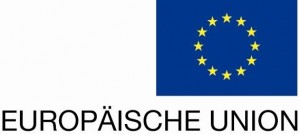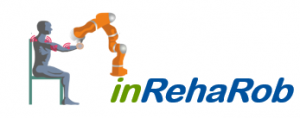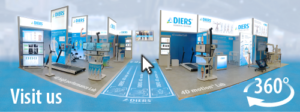
Research Projects
DIERS maintains an intensive exchange of scientific knowledge with several research institutes and industrial partners to develop innovative products at a high technical and scientific level which are optimally adapted to the needs of patients and users.
SCOLIO-SEE is a software and hardware system that, for the first time, will combine the data obtained by both radiographic and surface topography techniques.
This matching between internal and external deformation will permit monitoring spine curvature evolution after treatment by analyzing only surface changes, reducing the number of radiographs needed to a level that it is not harmful for the patients. Additionally, a software module will be developed to compare the 3D images taken for each individual patient in two successive visits, to show the 3D-changes occurred in the whole back surface occurred in this time interval.
Four important research organisations will develop the Scoliosee research project and other four companies will guide the researchers to achieve the best results on the research. From their side, researchers will provide SMEs with valuable intellectual property generated during the project research.
in cooperation with Aristotelio Panepistimo Thessaloniki (Greece)
funded by: 7th Framework Program of the European Union

Development of a foot pressure plate to capture threedimensional reaction forces for clinical and biomechanical gait analysis.
Gait analysis is usually relying on measuring ground reaction forces that can only measure vertical power. But to calculate momentum, shear and rotation powers, horizontal powers should be considered as well. As no product in the market was able to realize both dimensions, the goal of this project was to develop a three-dimensional system. To achieve a threedimensional power measurement, a new array of linked and miniaturized sensors was developed.
in cooperation with: Albert Ludwigs University Freiburg, Institute for Sports and Sport Science
funded by: Federal Ministry for Economy and Energy, Funding Program “Central Innovation Programme for medium-sized Businesses“”

Telemedicine System for the Prevention of Diabetic Foot Diseases
Diabetes has evolved to a widespread disease. It was the goal of the project to develop a cheap system for monitoring the diabetic foot syndrome. The focus was on developing methods to enable fast image processing and transferring. Every user should be able to take a picture of his feet. The apparatus was designed to position feet and legs easily and repeatedly. All these goals were reached. Apart from the mechanic holding apparatus for the feet, cheap hardware and software solutions were developed.
in cooperation with: Fraunhofer Institute

iSAM – intelligent sensors for balanced muscles
The iSam project pushes the possibilities of isometric strength measurement to a new level. It combines the strengths of EMG and isometrics in a biomechanic model. The innovative approach of iSAM is the differentiated strength measuring of single muscles. Our focus is on a higher reliability and better usability in diagnosing diseases by monitoring muscle coordination and the function analysis of single muscles.
in cooperation with: Institute for Biomedical Engineering, Technical University Dresden
funded by: Federal Ministry for Economy and Technology (BMWi), Funding Program “Central Innovation Programme for medium-sized Businesses“

Development of an automized customization mechanism for sleep lab masks
In the past, sleep masks lacked an adequate customization to the patient’s need, creating problems with airtightness, and inconvenience. By developing a static and dynamic threedimensional measuring mechanism for the face, quality of patient care could be improved.
in ccoperation with: Advanced Sleep Research GmbH; Sleep Laboratory Charité, Berlin
funded by: Federal Ministry for Economy and Technology (BMWi), Funding Program “Central Innovation Programme for medium-sized Businesses“

Contact-free Dynamical Optical 3D/4D Measuring System for Whole Body Scanning with Functional Analysis Capacity of Spine and Musculoskeletal System
Contact-free Dynamical Volumetric Measurements of Lower Body with Functional Clinical and Diagnostic Capacity
The main advantages of the project output are the equipment’s ability to reconstruct kinematics and dynamics of the musculoskeletal system, without use of potentially harmful or very expensive equipment, as well as its ability to indicate and quantify pathological changes or abnormalities, both at an early stage and in connection with diagnosis and therapy.
in cooperation with: KU Leuven (Belgium), University of Tübingen (Germany), Warsaw University of Technology (Poland)
funded by: 5th and 6th Framework Program of the European Union
Integration of innovative biomechanical measurement methods and medical-orthopaedic expert knowledge to support the choice and construction of orthopaedic insoles
The project aimed to develop and evaluate a measurement method that allows to assess the efficiency of posture-correcting insoles. It was a reaction to the emergence of multi-modal assumptions that cause for pain might well be in another part of the body than the part where the pain itself is located. A system under which orthopaedic insoles could be manufactured to counter cranio-mandibular malfunctions was created.
in cooperation with: Department for Sports Medicine, University of Tübingen
funded by: Federal Ministry for Economy and Technology (BMWi), Funding Program “PRO INNO II”
Development of a PC-based Advising System for medical and diagnostic Training Therapy for Orthopaedics
In this project, DIERS and the University of Hamburg created a software that calculates an individualized medical training therapy (MTT), based on the patient’s muscle strength and his posture. Immediately after the end of a measurement with a DIERS system, the software will provide the patient with a personal training plan. The software was developed by DIERS and the Department for Sport and Exercise Medicine of the University of Hamburg contributed its expert knowledge in MTT.
in cooperation with: University of Hamburg, Department for Sports and Exercise Medicine
funded by: Federal Ministry for Economy and Technology (BMWi), Funding Program “PRO INNO II”
Development of a pressure sensor platform to measure efficacies in three dimensions for biomechanical analysis
Gait analysis is usually relying on measuring ground reaction forces that can only measure vertical power. But to calculate momentum, shear and rotation powers, horizontal powers should be considered as well. As no product in the market was able to realize both dimensions, the goal of this project was to develop a three-dimensional system. To achieve a threedimensional power measurement, a new array of linked and miniaturized sensors was developed.
in cooperation with: Institute for Sports and Sports Science, University of Freiburg
funded by: Federal Ministry for Economy and Energy, Funding Program “Central Innovation Programme for medium-sized Businesses“

inRehaRob – individualized Rehabilitation Therapy with self-adapting robotic assistance
Recovering from a stroke is a particularly difficult and laborious procedure. In the European Union every year around 1 million persons suffer their first stroke. Many patients need inpatient treatment for months followed by a lifelong physiological therapy to regain their ability to execute simple movements. The loss of quality of life for the patient and the costs for public health care systems are enormous. Therefore a clear demand for innovative solutions exists.
The goal of the research project is to develop a self-adapting robotic system that allows patients to relearn motion patterns autonomously. Adjusting the system to the individual needs of the patient is a particular challenge for this project.
In cooperation with the RWTH Aachen.
Supported by the Federal Ministry for Education and Science



